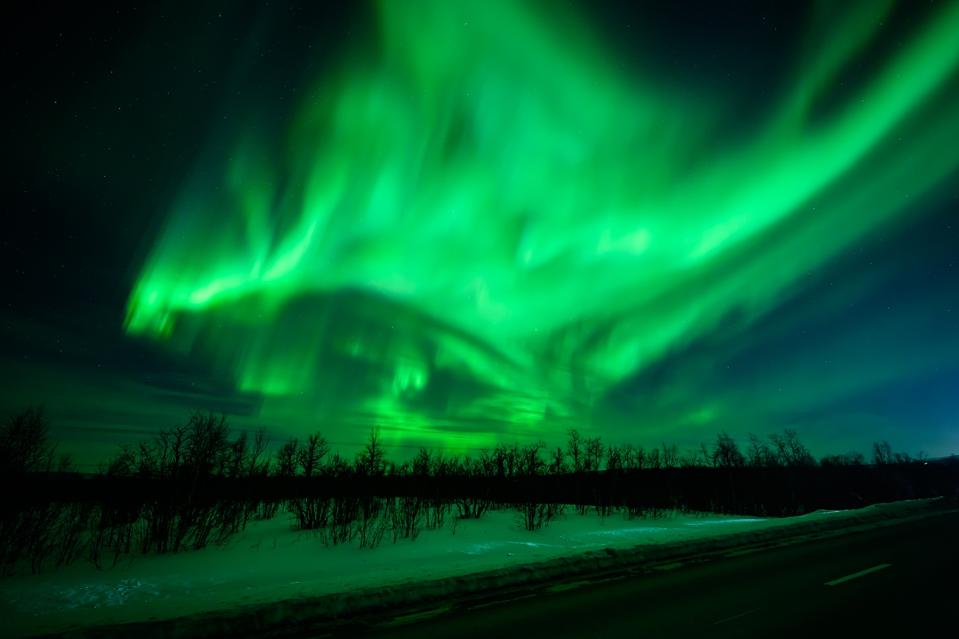Topline
The northern lights have a low likelihood of showing in a group of U.S. states bordering Canada on Saturday, according to a forecast from the National Oceanic and Atmospheric Administration, which provided a similar prediction for Sunday.
Key Facts
Forecasters with NOAA predict a quiet aurora with a Kp index of three, meaning the northern lights can be “quite pleasing to look at” for some viewers in the right places.
Saturday’s curved viewing line reaches as far south as the North Dakota and South Dakota border, encompassing portions of eight states which will have a better chance at seeing the natural phenomenon the farther north they are.
NOAA’s aurora forecast is nearly identical for Sunday, though the agency’s prediction for auroral activity could change.
Get Forbes Breaking News Text Alerts: We’re launching text message alerts so you’ll always know the biggest stories shaping the day’s headlines. Text “Alerts” to (201) 335-0739 or sign up here.
Where Will The Northern Lights Be Visible?
The aurora has a low likelihood of visibility in the northeastern tip of Washington, the tip of Idaho, northeastern Montana, North Dakota, Minnesota, northern Wisconsin and the Michigan Peninsula. Much of Alaska also has a shot at seeing the aurora.
What’s The Best Way To See The Northern Lights?
Observers looking to view the northern lights should try and do so between the hours of 10 a.m. and 2 p.m., the peak hours of the Kp index. Viewing chances can also be helped by being in an area with clear skies and little to no light pollution.
What’s The Best Way To Photograph The Northern Lights?
Those with traditional cameras should use wide-angle lenses, low shutter speeds and high apertures. Smartphone users can use night mode when trying to snap a picture of the northern lights. Tripods for image stability can also help.
Key Background
Visibility for the northern lights are forecasted to stay active into early 2026 since the sun reached a solar maximum in 2024, marking the peak of its solar activity characterized by an increase in sunspots, solar flares, and coronal mass ejections. During quiet auroras, northern U.S. states like North Dakota, Alaska, Washington and Montana have the best shots at seeing the northern lights, but active auroras can bring decent viewing opportunities to Oregon, Nebraska, Iowa, New Hampshire, Vermont and Illinois
Further Reading
Get Ready For 50 Years Of Intense Northern Lights, Scientists Say (Forbes)

